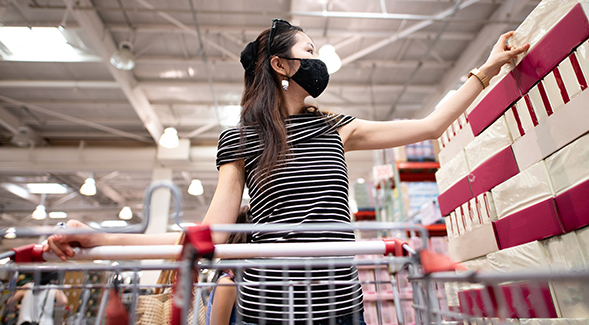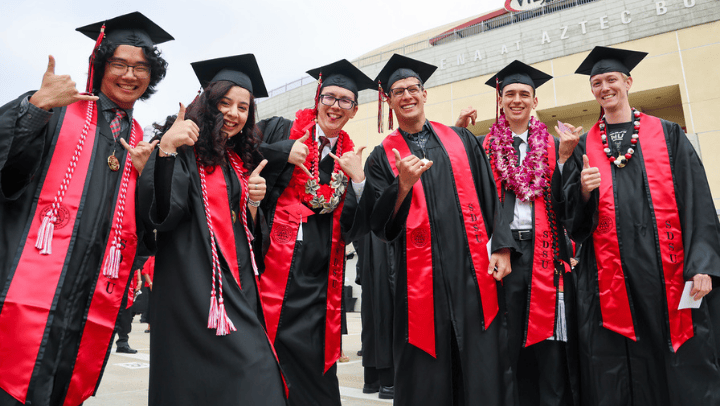What to Expect This Holiday Shopping Season
SDSU marketing professor Miro Copic discusses the changes we may see during this holiday shopping season.

As the COVID-19 pandemic continues to have a significant impact on American lives, U.S. retailers continue to adjust their year-end business strategies in hope for a profitable holiday shopping season.
Miro Copic, a marketing expert and lecturer in the Fowler College of Business at San Diego State University, shares his thoughts about this year’s evolving retail strategy and what consumers might expect to see during Black Friday, Small Business Saturday and Cyber Monday of 2020.
How will the Black Friday holiday shopping season look different in 2020?
Retailers are planning for a very different shopping experience. There will be much more shopping online as consumers avoid stores due to the pandemic. Instead of relying on big, tentpole events like Black Friday, retailers already started promoting holiday deals in October and are focusing on weekly promotions to engage consumers. This year, due to the pandemic, Amazon moved its Prime Day from August to October, which started the holiday shopping season early.
According to eMarketer, online shopping will increase 35.8% and in-store sales will decline about 5%. Overall, holiday spending is expected to increase 1-1.5% compared to recent historical spending increases of 3-5%. Retailers are working hard to make their stores safe for shoppers and this holiday season is critically important for them since most department stores and specialty retailers were closed during much of the second quarter.
However, there will be some traditions that won’t change. While fewer retailers will be open on Thanksgiving, many retailers, like Best Buy, will open their doors at 5 a.m. on Black Friday. This year there will be fewer “door buster” specials and retailers will spread their promotions out more to in anticipation of less foot traffic.
Will shoppers spend more, less, or the same amount of money as last year?
It is expected the average consumer will spend about 5% less than last year, which was a record. Consumers are expected to spend about $998 versus $1,048 last year. Most of this spending decline will be for gifts for themselves or their family. Spending for decorations and food is expected to remain robust.
Will brick-and-mortar and online retailers continue to hire temporary help as they have in the past?
Yes. Amazon is hiring over 100,000 temporary workers this holiday season for their warehouses and while traditional retailers may not be hiring as many temporary workers for their stores, they are hiring thousands to support online shipments and online orders that are being picked up in-store. These workers will allow in-store personnel to better engage with customers and make the backroom logistics easier.
What will be some of the top-selling gifts during this holiday season?
This year might be unusual but traditionally, the top selling gift categories are apparel, electronics (in particular televisions, wearables, and headphones), kitchen appliances, toys, jewelry, and gift cards. During this year’s back-to-school shopping in August and September, families spent a lot to upgrade home technology to accommodate distance learning for kids at home from school. Hence computers, routers and other peripherals were big sellers. One of the big gifting areas will likely be kitchen items given that consumers will continue to cook at home in the foreseeable future.
How will delays in shipping services impact the holiday shopping window for consumers?
The U.S. Postal Service is a wild card this season. Both UPS and FedEx are already hiring tens of thousands of extra workers to accommodate the crush of incremental online orders. More importantly, Amazon is setting up its own shipping network within the Amazon ecosystem and they will take on more deliveries directly rather than relying on UPS or FedEx. Amazon made a commitment last year that all Amazon Prime customers will receive their orders in one day, and they are not backing down. I would expect, on the whole, that deliveries will be on time, but the system will be tested during the Black Friday weekend and the week before Christmas.
Will company messaging on health and safety impact sales?
Hopefully, it will encourage more consumers to visit stores. Messaging on health and safety and each retailer’s procedures will be paramount in coaxing many hesitant consumers. As the National Retail Federation study cited, 37% of consumers plan to avoid crowds. If you extrapolate that to the traditional number of consumers that shop in malls and stores during the Black Friday weekend, it means that nearly 50 million fewer consumers will be visiting retailers.
In what other ways may companies need to be flexible in their operations, particularly marketing?
Companies will have to be able to communicate promotions to consumers on a timely basis – whether on TV, radio, print, online or mobile marketing. We know that over 80% of consumers start their shopping process with online research. Last year, nearly 50% of online purchases were made on a mobile device, many while consumers were out shopping. Retailers will have to deliver value like never before. Either through discounts (which won’t be as deep this year), a better shopping experience or demonstrably better quality products. Consumers are savvy and marketers need to meet them where they are, be transparent and offer value.
Will closures of many small businesses due to the pandemic impact the holiday shopping season?
Sadly, on the whole no. Tens of thousands of businesses have already shut down but consumers have other options (e.g., mass merchants, department stores, online retailers, etc.). It will eat into Small Business Saturday and unfortunately the trend will continue into 2021 without major mitigation of the pandemic and consumers being confident they can go out in public without restrictions or fear of catching COVID-19.



